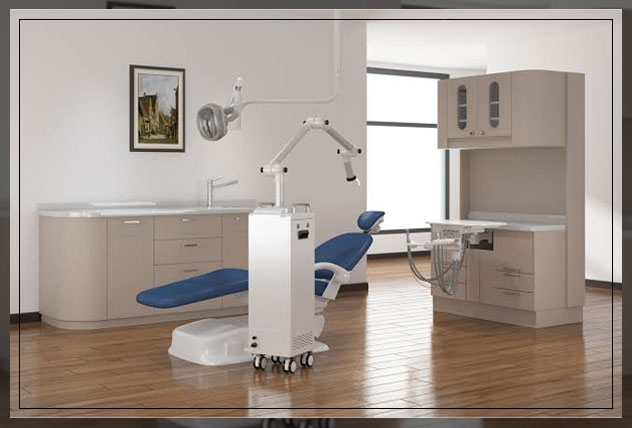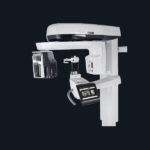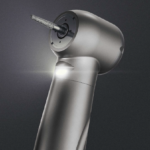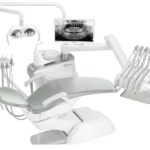
A dental chair suction system is an important part of a dental setting.
In most cases, you may have got one when you bought and installed the dental chair and set up the dental care unit.
However, in case you hear your suction, smell it, or it produces inadequate force to allow you to operate, it is probably time to replace the dental chair suction system.
It is important to note that dental suction system supports and helps to remove saliva, debris, and bacteria from the oral cavity of your patent.
Moreover, it translates to a safer experience for both you and your patients.
This is why you would probably want to replace older, outdated, or broken equipment before making an investment in a suction system.
Furthermore, it is important to familiarize yourself with the option you have available in the market and evaluate which may be the best.
Keep on reading to learn more about the dental chair suction system.
Understanding Dental Chair Suction System Power
It is important to understand how much power you will need in order to make the right decision while purchasing a dental chair suction system.
Moreover, it depends on the type of procedures, suction motor you will be doing in your dental setting, and how many operations and team members the system has to support.
It can be for amalgam separation, cleaning and maintenance, etc. to make sure you provide high quality services to treat patients.
You will also need to account for the number of high-volume evacuators, HVEs, or how much vacuum power you will need.
How may using a vacuum can serve “users”.
A User is how many HVEs and saliva ejectors, SEs will pull from that pull.
The formula, however, is simple.

It depends on the number of users, though different depending on whether you are using a vet or dry vac.
Furthermore, another important thing to note is that the power a wet vacuum diffuses is quicker as you open more lines
You can define a user as follows:
- for a dry vacuum: 1 user = 1 HVE or 5 SE’s
- for a wet vacuum: 1 user = 1 HVE or 2 SE’s
There are some efficiencies considering everyone is not using the vacuum at the exact same time.
However, it can be offset by other efforts, especially if you are practicing adding or plans to additional suction systems for aerosol capture due to COVID-19, which also pulls from the vacuum pump.
Generalized systems across typical practices see approximately 7 to 12 Hg of vacuum pressure that they need for a general dental practice.
While specialty practices may need up to 15 to 18 Hg.
Your dental clinic can either have wet suction or dry suction to separate liquid which is an important element as dental equipment to reduce the risk of infection.
Learn more about Hand Held Suction Pump here.
Types of Dental Chair Suction System
The source of the vacuum pressure or how it evacuates contaminants falls into one other following two categories.
Wet Dental Vacuum or wet-ring vacuum pumps uses water to create a vacuum.
While Dry Dental Vacuum creates that vacuum pressure by pumping dry air, using turbines or rotary vanes to create suction power.
Wet vacuum pumps were first used in dental practice in 1957.
Moreover, there are no drastic changes in the technology, they are and remain strong sources of vacuum power.
This is despite their relatively compact footprint.
As an investment, they also cost less on the shelf than dry vacs.
Though the associated penalties in water and electricity usage, as well as maintained, chip away at that initial economy.

However, as a general rule, they do provide more vacuum power than the dry competitors.
Thus, many tend to prefer them in practice when they perform surgery or support a large number of operators.
On the other hand, dry vacuum pumps first became commercially available in the 11980s.
This was in response to the desire to consume less water.
They tend to be larger, however, quiet, with a consistently strong vacuum.
Moreover, they need less maintenance and last longer than their wet pump predecessors.
Wet Dental Vacuums
Let’s discuss the working of wet vacuum systems:
Wet or wet-ring vacuum pumps use a steady supply of water to create pressure.
It provides the vacuum power of your pump.
This water consumption is the Achilles’ Heels of the wet vac. A single pump wet vac uses about 1/2 to 1 gallon per minute of use per day.
While a dual pump or double ring system consumes 1 to 2 gallons of fresh water per minute each day.

As they are powered by an electric motor that runs continuously at full speed, a steady stream of water runs through the pump the whole time your machine is on.
This quickly adds up, often up to an average of 360 gallons of water per day.
Moreover, it in turn drives up monthly sewer and electric bills, in some cases to the tune of thousands of dollars.
Also, the environmental impact of such constant water waste is huge as well.
Learn more about The Importance of a Dental Chair Unit here.
Why should you choose a Wet Vacuum?
There are a number of circumstances that can drive this decision.
First, is the need for some.
In some cases, for specialists and practitioners, there is no dry vac that can meet the need for the vacuum power a wet vac provides.
Secondly, the locations. In many buildings, particularly multi-floor or older buildings, the ability to vent into existing piping can sometimes be the only option.
For instance, if your practice is on the first floor of a multi-floor building in Dubai, there may not be any existing exhaust pipe that leads outside the building.
Or you may not have an option to penetrate the building exterior to accommodate an exhausted pile, so working with the existing plumbing option is better.
Of course, the cost is always a consideration.
Dentists outfitting entire practices as a beginner or backfilling an existing space that fits a wet vac, or those comfortable paying costs over time vs. one initial investment, may find these better.
In order to help mitigate the volume and costs of excess wastewater, some wet vacs have recirculatory systems.
This helps to add water to recycle and rescue some other waste liquid before releasing it into the sewer.
Advantages and Disadvantages of Wet Vacs
Just like anything, defining something as advantageous or not often depends on the situation you make use of that system.
Let’s discuss the advantages and disadvantages of wet vacs as follows:
Size: Wet vacs have, traditionally, are more compact, and need a smaller footprint, which makes them important in offices.
This also comes without a lot of extra inches or the lack of a room that needs utility equipment.
Power: The amount of power you will need is specific to your practice.
Both wet and dry vacs have a varying range of sizes and powers of suction.
Moreover, you will measure the power in inches of mercury, or Hg.
You will need to determine how much power you need and work with a dealer about which machine will work in your dental setting.
Noise: Wet vacs tend to be quieter which translates to a quieter office and more flexibility in where you place the machine.
However, with recent changes in the dry vac technology, you can also find those with enough reduction and for some lines, they are also quiet.
Longevity: Wet vacs have a lifespan of about 5 to 12 years.
Furthermore, it also depends on the water quality and hours run.
Maintainance: Both wet and dry vacs will need daily flushing of the suction lines.
Also, you will need to remove blood and debris, and an approved disinfectant should be run through the tubing.
However, there is an additional trap cleaning you will need with wet vacs.
As water contains minerals and pollutants that accumulate, the pump components can wear more quickly.
And the harsh cleaning solution that runs through your dental chair suction system can also take a tool.
Cost: The initial investment is lower than that of a dry vac.
However, the ongoing costs of water, electricity, maintenance, additional components, and the shorter lifespan can make it difficult to maintain.
Learn more about Sterilization and Disinfection here.
Dry Dental Vacuums
Let’s discuss the working of dry vacuum systems:
In response to getting away from water waste, the first dry vac system by Ramvac was created in the early 1970s.
The first one was for basic general dentistry.
Instead of a steady stream of water that constantly disposes of waste materials through the sewer pipes, the dry vac design incorporates a collection of the tank.
It collects the liquids and solids from the dental chair while the vacuum is ruining.
And then at the end of the day, the tank, gravity drains waste liquids into the sewer, thus eliminating unnecessary water waste.
Moreover, most dry vacs, are belt-driven. They consume less electricity so the electricity bills you get will be minimal.

Thus conserving costs and resources in a couple of different ways.
The up-front investment, however, is higher. But quickly pays itself back often with 3 to 4 years.
For a vacuum that stands out for longevity, look for the one that is oil-lubricated.
It not only lubricates those components but also extends their life.
And makes for a stronger vacuum with stronger vacuum positive displacement.
Furthermore, maintenance is minimal. You will need a routine annual filter and oil change to remove any pollutants that it may pull into the pump.
M
Also, these work best for general dentistry and with -7 to -10 inches of vacuum.
This means they have the ability to support a robust practice with multiple chairs and operators.
However, remember that it will need a dedicated exhaust pipe/line to the outside.
Advantages and Disadvantages of a Dry Vac
Some advantages and disadvantages of a dry vac are:
Size and Volume: Dry vacuums are larger and louder, in comparison to wet vac options.
However, newer models have significantly cut down their footprint and can also run at a volume no higher than a handheld.
Power: The amount of power you will need is specific to your practice.
Both wet and dry vacs have a range of sizes, and powers of suction.
Moreover, you will need to determine how much power you will need and work with a dealer.
Longevity: Dry vacs tend to last longer. Many of these last for at least 25 years with regular maintenance.
Maintainance: Both types need daily flushing of lines and the gravity release of the solids from the collecting tank.
Other than that, maintenance is minimal. An annual oil and filter change will keep them running efficiently for decades.
Cost: The up-front cost of these vacs may be higher.
However, the investment breaks even within a few years, due to the absence of ongoing aggregate costs from water and electricity that you will need to use with wet vacuums.
Conclusion
The purchase of the right dental chair suction system for your practice depends on the right assessment of your need. Just like all big investments, carefully weighing the pros and cons of each model, you can make the right decision for your dental setting.





Comments